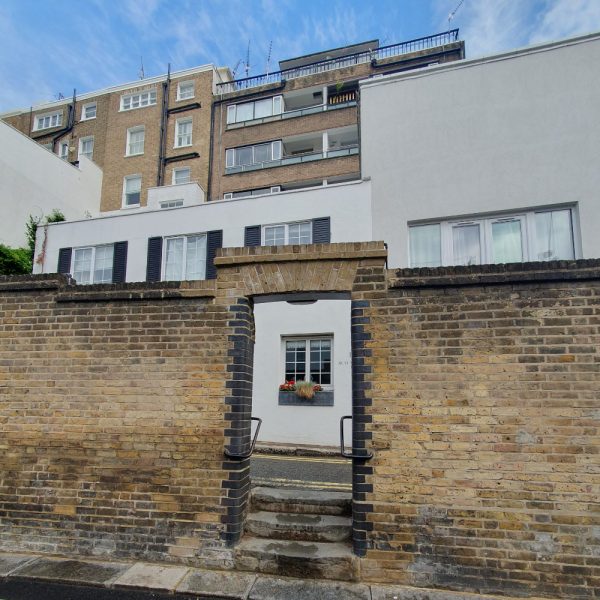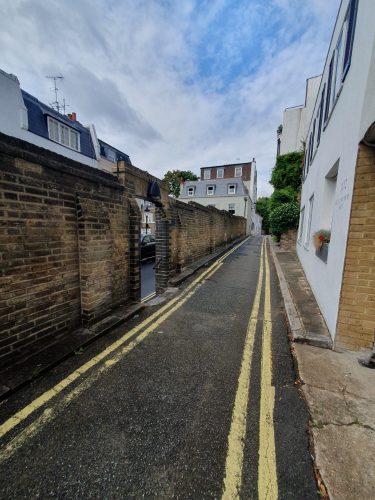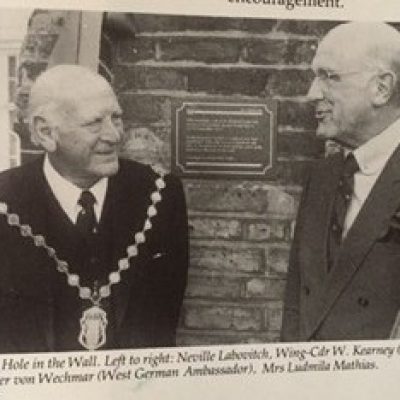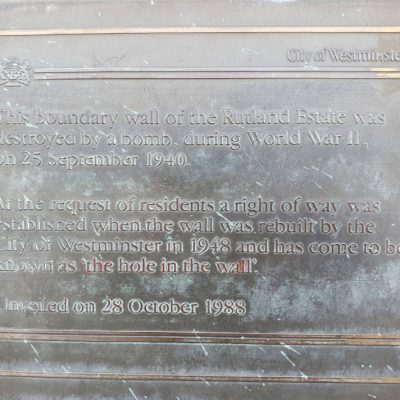The Curious History of the Knightsbridge Hole in the Wall


Tucked away just a few steps from Ennismore Gardens lies a modest passage with a remarkable story.
Known locally as the “Hole in the Wall,” this unassuming gap between Rutland Mews East and Rutland Street is more than a shortcut—it’s a relic of wartime resilience and urban transformation.
The boundary wall enclosing the Rutland Estate was built in the mid-19th century to separate the exclusive residential squares from the bustling Brompton Road. Its imposing presence created a physical and social divide, forcing residents to take long detours to reach Knightsbridge’s shopping district.
The wall’s fate changed dramatically on 25 September 1940, when a German bomb—part of the Blitz—struck the area and destroyed a section of the wall as well as an adjoining house, no. 43 Rutland Gate. Four people were rescued from the building, thankfully with no casualties.
While the destruction was part of a tragic chapter in London’s history, it inadvertently solved a long-standing inconvenience for local residents. The breach in the wall offered a direct route to Harrods and other amenities, and when the City of Westminster rebuilt the wall in 1948, an enterprising resident, Mr. John Mathias of Rutland Gate, successfully organised a petition to retain the new right of way by incorporating a pedestrian passage through the wall.

In 1988 a ceremony was held to unveil a plaque to commemorate the unusual origins of the “Hole in the Wall”. The ceremony was attended by Neville Labovitch (then Chairman of the Knightsbridge Association) and Mrs. Ludmilla Mathias (widow of Mr. John Mathias), who received a bouquet from Wing-Cdr W. Kearney (then Lord Mayor of Westminster). His Excellency Baron Rüdiger von Wechmar, also attended, performing his last duty as Ambassador to the UK for the Federal Republic of West Germany.
To this day the plaque sits next to the hole in the wall and reads: “This boundary wall of the Rutland Estate was destroyed by a bomb, during World War II, on 25 September 1940. At the request of residents, a right of way was established when the wall was rebuilt by the City of Westminster in 1948 and has come to be known as ‘the hole in the wall”.
For Ennismore Gardens residents, the Hole in the Wall is more than a convenient path -it’s a symbol of how local voices can shape the urban landscape.
